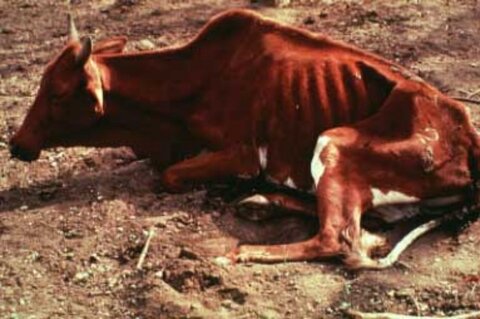Why is nagana more widespread than sleeping sickness?

Nagana is always more common than sleeping sickness for three reasons.
First, sleeping sickness is caused by Trypanosoma brucei rhodiense or T.b. gambiense. and the period required for these species to develop in the fly is longer than that required by the trypanosomes responsible for nagana (T. vivax and T. congolense). Consequently, the percentage of tsetse carrying sleeping sickness are much lower than that carrying that carrying nagana.
Second, an animal with trypanosomiasis may be infected with T. brucei, T. vivax or T. congolense. In contrast, sleeping sickness in any one part of Africa will be due to just one species of trypanosome; generally Trypanosoma brucei rhodiense in east and southern Africa and T.b. gambiense in central and west Africa. The proportion of tsetse infected with with any one of three Trypanosoma spp. is greater than the proportion infected with just one particular species (eg, Woolhouse et al., 1993). Consequently, the probability of being infected with a species of Trypanosoma that can cause animal trypanosomiasis is also greater.
Finally, tsetse must feed on a host to infect it with trypanosomes. Several species of tsetse found in east and southern Africa (eg, Glossina pallidipes, G. morsitans, G. longipennis) are repelled by humans (Vale, 1974; Makumi et al., 2000). This repellency is generally more marked with older flies which are also more likely to be the infective tsetse. In contrast, livestock seem to be at least as attractive as wild hosts to tsetse. Indeed, the greater size and tolerance of cattle makes them better hosts than natural wild hosts such as warthogs (Vale, 1977). Consequently, tsetse are inherently more efficient vectors of nagana than sleeping sickness.
References
Makumi, J.N., Stevenson, P. & Green, C.H. (2000). Control of Glossina longipennis (Diptera: Glossinidae) by insecticide-treated targets at Galana Ranch, Kenya, and confirmation of the role of G. longipennis as a vector of cattle trypanosomiasis. Bulletin of Entomological Research 90, 397-406.
Vale, G. A. (1974). The response of tsetse flies (Diptera; Glossinidae) to mobile and stationary baits. Bulletin of Entomological Research 64, 545-587.
Vale, G.A. (1977). Feeding responses of tsetse flies (Diptera: Glossinidae) to stationary hosts. Bulletin of Entomological Research 67, 635-649.
Woolhouse, M.E.J., Hargrove, J.W. & McNamara, J.J. (1993). Epidemiology of trypanosome infestations of the tsetse fly Glossina pallidipes in the Zambezi Valley. Parasitology 106, 479-485.